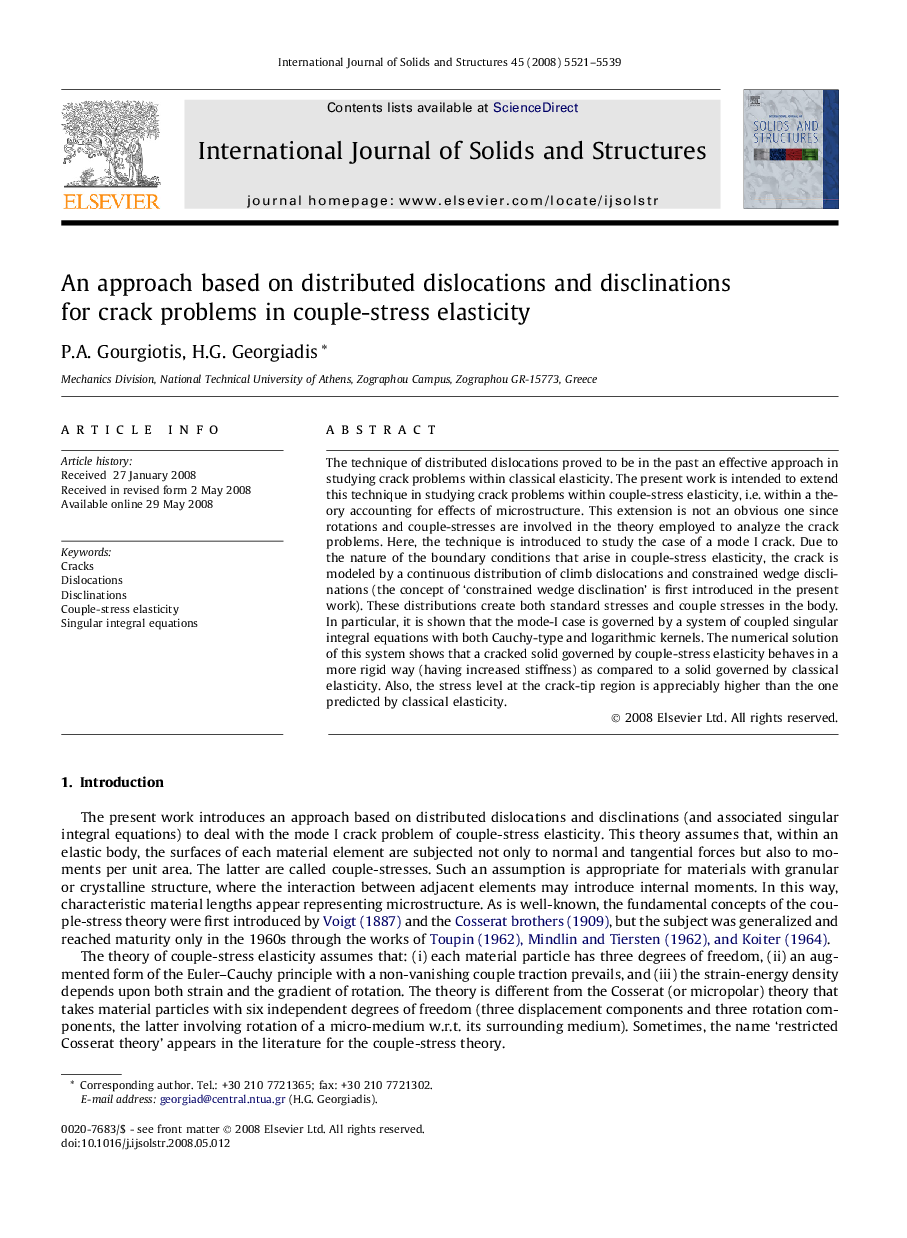| Article ID | Journal | Published Year | Pages | File Type |
|---|---|---|---|---|
| 279566 | International Journal of Solids and Structures | 2008 | 19 Pages |
The technique of distributed dislocations proved to be in the past an effective approach in studying crack problems within classical elasticity. The present work is intended to extend this technique in studying crack problems within couple-stress elasticity, i.e. within a theory accounting for effects of microstructure. This extension is not an obvious one since rotations and couple-stresses are involved in the theory employed to analyze the crack problems. Here, the technique is introduced to study the case of a mode I crack. Due to the nature of the boundary conditions that arise in couple-stress elasticity, the crack is modeled by a continuous distribution of climb dislocations and constrained wedge disclinations (the concept of ‘constrained wedge disclination’ is first introduced in the present work). These distributions create both standard stresses and couple stresses in the body. In particular, it is shown that the mode-I case is governed by a system of coupled singular integral equations with both Cauchy-type and logarithmic kernels. The numerical solution of this system shows that a cracked solid governed by couple-stress elasticity behaves in a more rigid way (having increased stiffness) as compared to a solid governed by classical elasticity. Also, the stress level at the crack-tip region is appreciably higher than the one predicted by classical elasticity.
